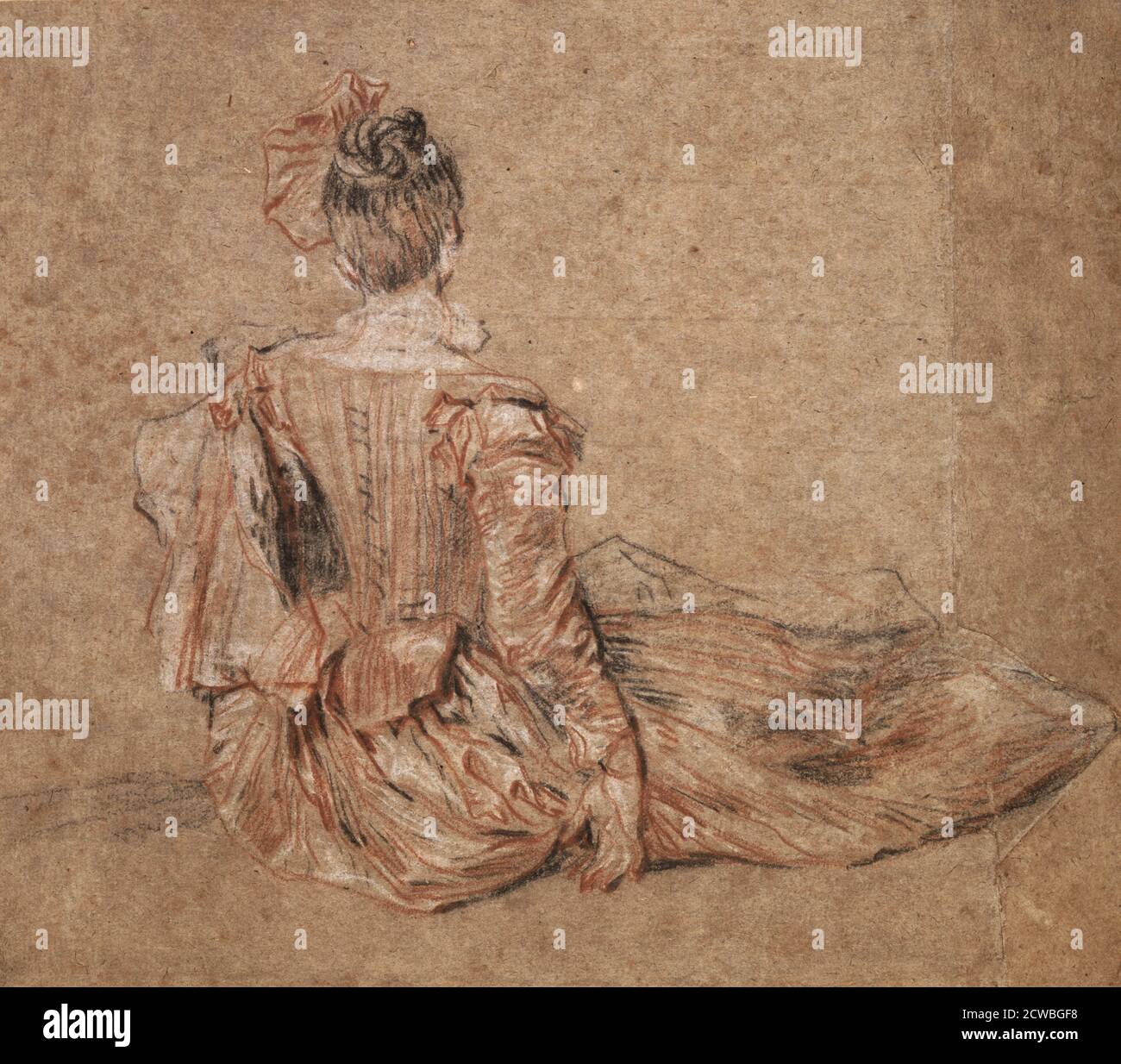Study of a woman seen from the back by Jean-Antoine Watteau, 1716-1718. This study is drawn from a live model. Watteau has used his favourite combination of black, red and white chalks. This technique 'a trois crayons' became widely used by French artists of the eighteenth century. The costume is the main focus of Watteau's studies. The woman is seated on the ground so that her elaborate dress spreads out around her. This provides the artist with an excuse to study the movement of the drapery according to the different positions of her body. From the collection of the British Museum, London, U

Image details
Contributor:
World History ArchiveImage ID:
2CWBGF8File size:
60 MB (3 MB Compressed download)Releases:
Model - no | Property - noDo I need a release?Dimensions:
4880 x 4297 px | 41.3 x 36.4 cm | 16.3 x 14.3 inches | 300dpiDate taken:
27 April 2020Photographer:
World History ArchiveMore information:
This image could have imperfections as it’s either historical or reportage.
Study of a woman seen from the back by Jean-Antoine Watteau, 1716-1718. This study is drawn from a live model. Watteau has used his favourite combination of black, red and white chalks. This technique 'a trois crayons' became widely used by French artists of the eighteenth century. The costume is the main focus of Watteau's studies. The woman is seated on the ground so that her elaborate dress spreads out around her. This provides the artist with an excuse to study the movement of the drapery according to the different positions of her body. From the collection of the British Museum, London, United Kingdom.